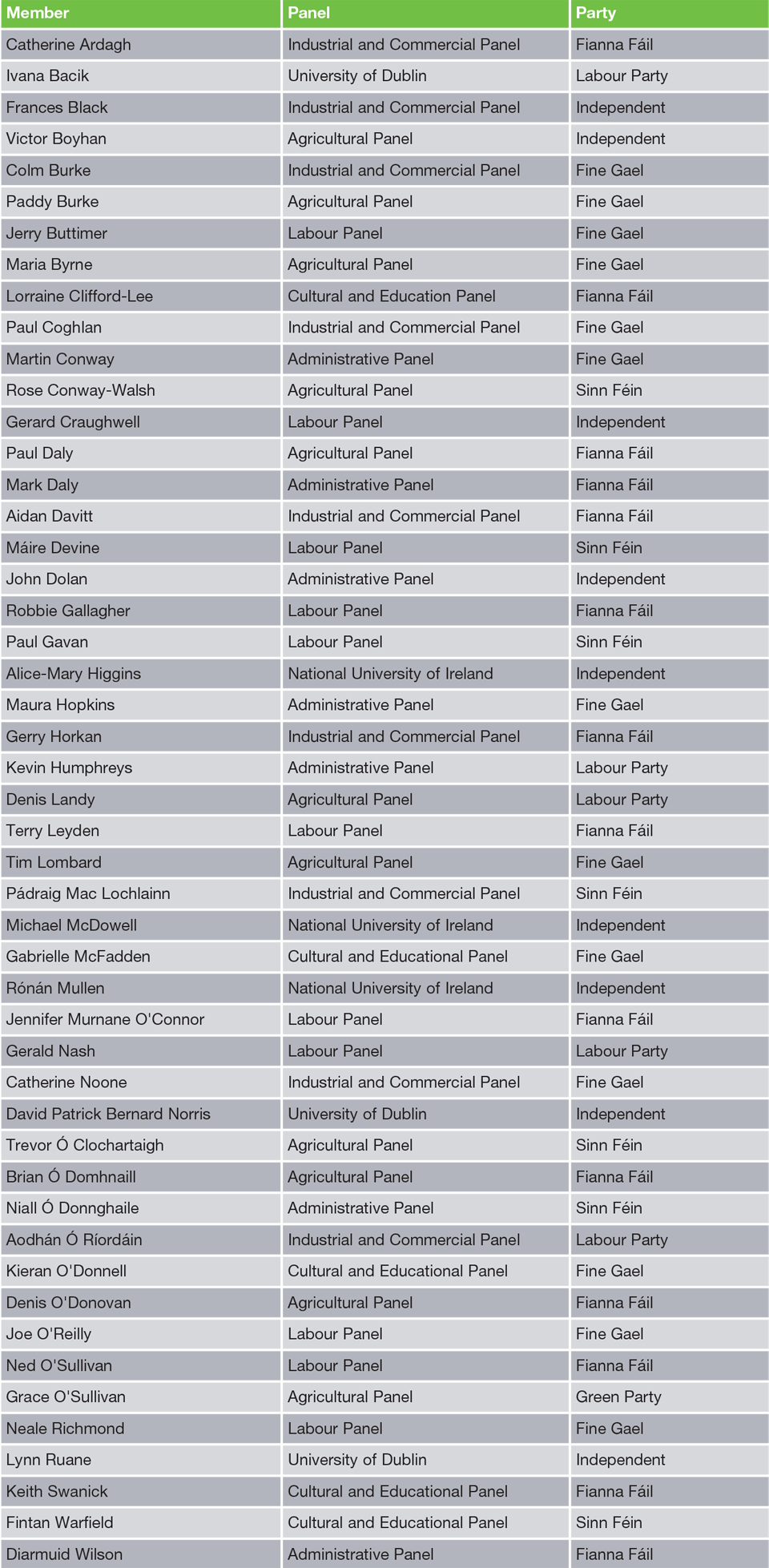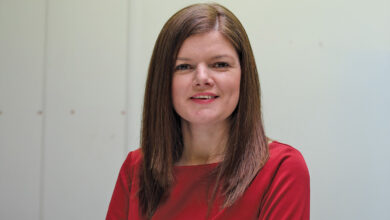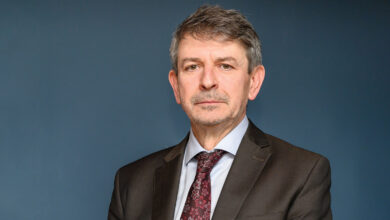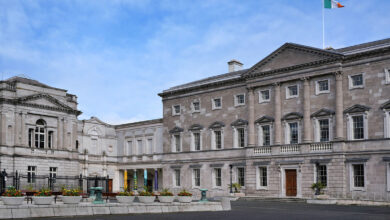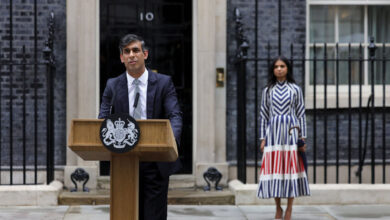The 25th Seanad Éireann
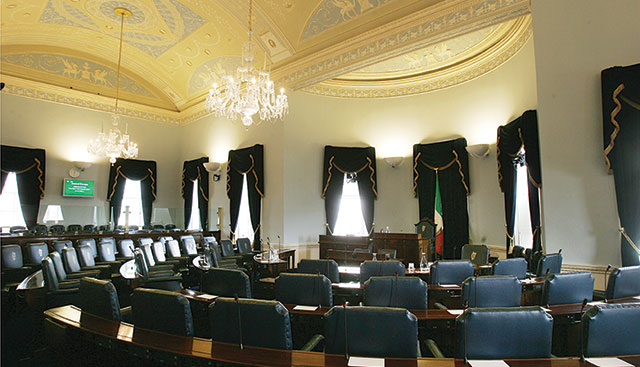
eolas looks at the shape of the upper house of the Oireachtas after the recent elections.
It may not have made as many headlines as the recent Dáil election but the upper house of the Oiraechtas, the Seanad Éireann has also been through an election.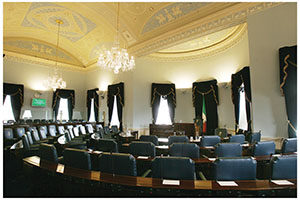
The Seanad Éireann is comprised of 60 members, as follows:
• 43 senators elected by panels representing vocational interests namely, culture and education, agriculture, labour, industry and commerce and public administration;
• 6 senators elected by the graduates of two universities: three each by the National University of Ireland and Trinity College Dublin;
• 11 senators nominated by the Taoiseach.
In theory the Seanad doesn’t recognise party affiliation however, as the electorate is made up of members of the incoming Dáil, the outgoing Seanad, county councils and county borough councils, the composition of the Seanad tends to reflect party strengths in the Dáil.
A breakdown of seats shows that the two parties that formed the government between 2001 and 2016 (Fine Gael and Labour) both lost seats in the Seanad during this election, Fine Gael lost five and Labour lost four respectively. It was a good election for Sinn Féin and Fianna Fáil, although some members of the latter party may be disappointed no gains were made on the number of seats won in 2011.
The most significant change was in the line-up of the vocational panels were Sinn Féin made its expected breakthrough. It added its existing team of three senators with former Donegal TD Pádraig MacLochlainn, former Mayor of South Dublin and LGBT activist Fintan Warfield, Mayo Dáil candidate Rose Conway-Walsh and former Mayor of Belfast Niall Ó Donnghaile joining the Sinn Féin team in the Seanad.
The other major shift was the election of a block of nine independents as a result of a strategy designed by outgoing senator Gerard Craughwell of encouraging independent councillors to vote for independent candidates. Amongst this group of independents was singer and campaigner Frances Black. Although Labour were four seats down on the 2011 elections it did manage to get former ministers of state Ged Nash and Aodhán Ó Ríordáin elected as senators. The Green Party also had a breakthrough winning its first ever seat in a Seanad election with the election of Grace O’Sullivan.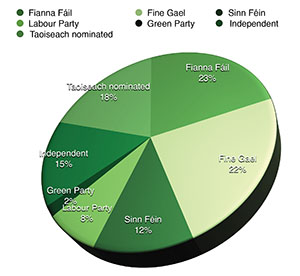
With the relatively larger electorate the two university constituencies University of Dublin, Trinity College and the National University of Ireland (NUI) usually gets more media attention. On the NUI panel the only incumbent contesting the election topped the poll and was followed by the high-profile former Progressive Democrat leader and minister Michael McDowell. The third NUI seat was filled by the President’s daughter Alice Mary Higgins. On the trinity panel incumbents David Norris and Ivana Bacik both were returned comfortably. The third seat was taken by president of Trinity students’ union Lynn Ruane at the expense of outgoing senator outgoing vocational senator Averil Power.
The only outstanding seats are the 11 senators to be appointed by the Taoiseach. There is an expectation that the majority of these should be independent as was the case in 2011 when seven of those nominated did not take a Fine Gael or Labour whip. Even if Enda Kenny is to appoint Fine Gael members the government will not have a majority in the Seanad. In order to get votes passed in the new Seanad, Fine Gael will need to make deals with other parties and groups or else rely on Fianna Fáil support as may be the case in the lower chamber. Does this matter? The Seanad cannot delay money Bills but it can delay most other legislation by 90 days. In the fluid world of minority government such an upset could make all the difference at the right time. Despite the election of what looks like a relatively more inclusive and vibrant Seanad the issue of reform will be not that far on the horizon.
Members elected to date
